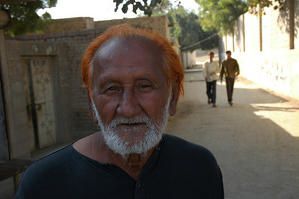One of the first criticisms to be launched against the study of Ramesses' hair is that its findings are "outdated". This is, of course, completely ludicrous: the examination of the hair occurred a mere 25 years ago, and the study of the mummy was published only 15 years ago, in 1985. It should also be observed that no other series of tests, as detailed as these ones, have been performed, either before or since this particular investigation. This study forms our most comprehensive set of data at the current time. [L. Balout, C. Roubet & C. Desroches-Noblecourt, "La Momie de Ramses II," (Paris: Editions Recherche sur les Civilisations, 1985).]
There have also been those who have criticised the quality of the scholarship which produced the study of Ramesses. We should note that the investigation of Ramesses' hair was performed by no less than THIRTEEN scientists, a list of whom, can be found below:
Professor P. F. Ceccaldi, J. L. Clement, J. Connet, J. Diebolt, J. Eloy, J. C. Garson, G. Gastaldi, R. Hagege, A. Le Pareux, J. L. Leveque, A. M. Minondo-Gracia, M. Sotton and M. Vidalis. [Ibid., p. 254.]
This august group were employed by the following, distinguished laboratories:
Laboratoire de sciences judiciaires et de médecine légale (service of Professor Ceccaldi), Laboratoire de la Societe L'Oreal, Laboratoire du Commissariat à l'Energie Atomique de Grenoble; and Institut Textile de France. [Ibid., p. 383.]
Presumably, if the study had been poorly performed, or if the science behind the tests was faulty, at least one of these individuals, or their institutions, would have noticed the mistake.
Another critique of the scholarship employed, states that no peer-reviewed journals were utilised in the work. This is incorrect. Ceccaldi, the leading scientist who drafted the conclusions of the group, appended an authoritative bibliography to his essay. This included articles from the Journal of Forensic Medicine, the Journal of Forensic Science, the Annals of the New York Academy of Sciences, the South American Journal of Physical Anthropology, and numerous other peer-reviewed journals and monographs. We should also note that with thirteen scientists on his team, Ceccaldi was being peer-reviewed as he worked. [Ibid., pp. 257-258.]
Professor P. F. Ceccaldi, with a research team behind him, studied some hairs which were removed from the mummy's scalp. Ramesses II was 90 years-old when he died, and his hair had turned white. Ceccaldi determined that the reddish-yellow colour of the mummy's hair had been brought about by its being dyed with a dilute henna solution; it proved to be an example of the cosmetic attentions of the embalmers. However, traces of the hair's original colour (in youth), remain in the roots, even into advanced old age. Microscopic examinations proved that the hair roots contained traces of natural red pigments, and that therefore, during his youth, Ramesses II had been red-haired. It was concluded that these red pigments did not result from the hair somehow fading, or otherwise altering post-mortem, but did indeed represent Ramesses' natural hair colour. Ceccaldi also studied a cross-section of the hairs, and he determined from their oval shape, that Ramesses had been "cymotrich" (wavy-haired). Finally, he stated that such a combination of features showed that Ramesses had been a "leucoderm" (white-skinned person). [Balout, et al. (1985) 254-257.]






